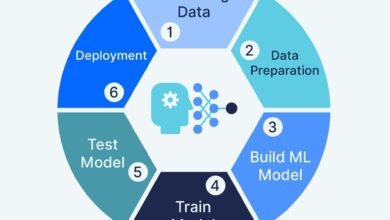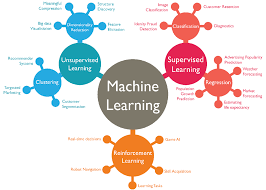
In the rapidly evolving landscape of artificial intelligence, prompt engineering has emerged as a critical skill that bridges the gap between human intent and machine. As organizations and individuals increasingly rely on large language models (LLMs) like ChatGPT, Claude, and other generative AI tools, the ability to craft effective prompts has become indispensable. AI prompt engineering is the art and science of designing precise instructions that guide AI systems to produce accurate, relevant, and high-quality outputs that align with user expectations.
The exponential growth of AI technology has democratized access to powerful machine learning models, yet many users struggle to harness their full potential. Poor prompts lead to vague responses, irrelevant information, or outputs that miss the mark entirely. Conversely, well-engineered prompts can transform AI interactions, unlocking unprecedented productivity and creativity. Whether you’re a content creator seeking assistance with writing, a developer building AI-powered applications, or a business professional streamlining workflows, prompt design fundamentals are essential.
This comprehensive guide explores the intricate world of AI prompt engineering, providing actionable strategies for writing better instructions for AI. We’ll delve into proven techniques such as few-shot learning, chain-of-thought prompting, and context optimization that enhance AI performance. You’ll discover how to structure prompts effectively, avoid common pitfalls, and leverage advanced methods to achieve consistent, reliable results. From the elements of effective prompts to implementing best practices for prompt engineering, this article equips you with the knowledge to master AI communication.
The stakes are high in today’s AI-driven world. Organizations investing in prompt optimization see measurable improvements in efficiency, accuracy, and innovation. As natural language processing capabilities continue advancing, those who master prompt engineering techniques will maintain a competitive advantage, extracting maximum value from AI investments while minimizing trial-and-error frustration.
AI Prompt Engineering
Prompt engineering represents a fundamental paradigm shift in how humans interact with artificial intelligence. At its core, this discipline involves designing, refining, and optimizing input instructions to elicit desired responses from AI models. Unlike traditional programming that requires rigid syntax and code structures, prompt engineering operates through natural language, making it accessible yet deceptively complex.
The concept gained prominence with the advent of transformer models and large language models that demonstrated remarkable capabilities in contextual nuances. AI prompt engineering isn’t simply about asking questions—it’s about providing sufficient context, establishing clear objectives, specifying output formats, and sometimes including examples that guide the model’s reasoning process. This prompt-based learning approach enables users to customize AI behavior without extensive technical expertise or model retraining.
Modern prompt engineering encompasses various methodologies, from simple instruction-based prompts to sophisticated techniques involving meta-learning and multi-step reasoning. The field draws upon principles from cognitive science, linguistics, and information theory, recognizing that how we frame questions fundamentally influences the quality of answers we receive. As generative AI systems become more integrated into daily workflows, these underlying principles become increasingly valuable.
Research indicates that prompt quality directly correlates with output accuracy and relevance. Studies show that well-crafted prompts can improve model performance by 30-50% compared to baseline queries. This significant impact has spawned an entire ecosystem of prompt engineering best practices, tools, and communities dedicated to sharing effective strategies across different use cases and domains.
The Importance of Effective Prompt Design
Effective prompt design serves as the cornerstone of successful AI interactions, determining whether users experience frustration or achieve remarkable results. The difference between mediocre and exceptional AI outputs often lies not in the model’s capabilities but in the quality of instructions provided. Clear, specific prompts reduce ambiguity, minimize computational waste, and accelerate time-to-value for AI applications.
Organizations embracing prompt optimization report substantial benefits across multiple dimensions. First, precision in prompt crafting reduces the iterative back-and-forth typically required to achieve satisfactory results, saving valuable time and resources. Second, well-designed prompts ensure consistency across outputs, which is crucial for maintaining brand voice, adhering to compliance requirements, or generating standardized reports. Third, effective prompts expand the practical applications of AI technology, enabling users to tackle increasingly complex tasks with confidence.
The economic implications of prompt engineering proficiency cannot be overstated. Companies leveraging AI models for content creation, customer service, data analysis, or software development find that investing in prompt engineering training yields immediate returns. A marketing team that masters prompt design can generate campaign materials faster; developers using AI-assisted coding can debug more efficiently; researchers can analyze datasets with greater depth—all through superior instruction writing.
Beyond productivity gains, thoughtful prompt engineering addresses critical concerns around AI safety and reliability. Carefully constructed prompts help mitigate biases, reduce hallucinations (instances where AI generates plausible but incorrect information), and ensure outputs align with ethical guidelines. As artificial intelligence becomes more deeply embedded in decision-making processes, the ability to write prompts that produce trustworthy, verifiable results becomes paramount.
Key Elements of Successful Prompts

Constructing successful prompts requires implementing several fundamental elements of prompt engineering. The first essential component is clarity—prompts should articulate the task unambiguously, leaving no room for misinterpretation. Vague instructions like “tell me about marketing” generate equally vague responses, whereas specific prompts such as “explain three digital marketing strategies for small businesses targeting millennials” produce focused, actionable insights.
Context provision represents another critical element in prompt structure. AI models perform optimally when supplied with relevant background information that frames the request appropriately. This might include specifying the target audience, desired tone, relevant constraints, or domain-specific knowledge. For instance, asking an AI to “write a product description” versus “write a 100-word product description for a luxury smartwatch targeting tech-savvy professionals, emphasizing innovation and status” demonstrates the power of contextual detail.
Task specification and output formatting constitute the third pillar of effective prompts. Explicitly stating what format the response should take—whether bullet points, paragraphs, tables, or specific structures—guides the AI system toward producing immediately usable outputs. Including instructions like “provide your answer in three sections: summary, detailed analysis, and recommendations” or “format the response as JSON” eliminates post-processing requirements and streamlines workflows.
The fourth element involves examples and demonstrations, particularly valuable when working with complex or nuanced requests. Few-shot prompting, where users provide sample inputs and desired outputs, teaches the AI model the pattern to replicate. This technique proves especially effective for tasks requiring specific stylistic conventions, formatting requirements, or domain-specific reasoning that might not be immediately obvious from instructions alone.
Fundamental Techniques in Prompt Engineering
Zero-shot prompting represents the most straightforward prompt engineering technique, where users provide instructions without examples and rely on the AI model’s pre-trained knowledge. This approach works well for common tasks like summarization, translation, or general knowledge queries. The key to zero-shot success lies in precise instruction wording: “Summarize the following article in three sentences focusing on the main argument and supporting evidence” demonstrates effective zero-shot prompting by combining clear directives with specific constraints.
- Few-shot learning elevates prompt effectiveness by including one or more examples that illustrate the desired output pattern. This technique bridges the gap between the model’s general capabilities and specific task requirements. For instance, when requesting sentiment analysis, providing examples like “Review: ‘The service was terrible’ → Sentiment: Negative” and “Review: ‘Amazing experience!’ → Sentiment: Positive” before presenting new reviews dramatically improves classification accuracy and consistency.
- Chain-of-thought prompting has revolutionized how we approach complex reasoning tasks with AI systems. By instructing the model to “think step-by-step” or “show your reasoning,” users enable the AI to break down multifaceted problems into manageable components. This technique proves invaluable for mathematical problem-solving, logical reasoning, or any scenario requiring multiple inference steps. Research demonstrates that chain-of-thought prompting can improve performance on complex tasks by over 40% compared to direct questioning.
- Role prompting leverages the model’s ability to adopt specific personas or expertise levels. Prefacing requests with “You are an expert financial advisor” or “Act as a creative storytelling coach” primes the AI model to respond from that perspective, incorporating relevant knowledge and appropriate communication styles. This technique enhances output quality by activating domain-specific patterns within the model’s training data, resulting in more authoritative and contextually appropriate responses.
Advanced Prompt Engineering Strategies
- Prompt chaining represents an advanced strategy where complex tasks are decomposed into sequential prompts, with each output feeding into the next input. This approach mirrors human problem-solving by breaking overwhelming challenges into digestible steps. For example, rather than requesting a comprehensive business plan in a single prompt, users might chain prompts for market analysis, competitive landscape, financial projections, and executive summary, allowing each component to receive focused attention and refinement.
- Self-consistency prompting enhances reliability by generating multiple responses to the same query and selecting the most consistent or common answer. This technique proves particularly valuable for tasks where accuracy is paramount, such as data extraction, factual queries, or decision support. By analyzing patterns across multiple iterations, users can identify the most reliable output while flagging instances where the AI model demonstrates uncertainty or produces divergent results.
- Temperature and parameter tuning provide another layer of control in prompt optimization. Adjusting parameters like temperature (controlling randomness), top-p (nucleus sampling), and max tokens (output length) allows users to fine-tune outputs for specific needs. Lower temperatures yield more deterministic, focused responses ideal for factual queries, while higher temperatures encourage creativity and diversity—perfect for brainstorming or creative writing applications.
- Retrieval-augmented generation (RAG) combines prompt engineering with external knowledge sources, enabling AI systems to access up-to-date information beyond their training data. By incorporating relevant documents, databases, or web content into prompts, users dramatically expand the AI model’s effective knowledge base. This technique addresses the limitation of static training data, making AI applications more current and contextually relevant for dynamic domains like news analysis, research assistance, or technical documentation.
Common Prompt Engineering Mistakes to Avoid
One of the most prevalent errors in writing instructions for AI is ambiguity and a lack of specificity. Users often submit overly broad prompts, expecting the AI model to intuit their precise needs. Requests like “write something about technology” leave excessive interpretation room, resulting in outputs that rarely meet expectations. The solution involves being explicit about scope, audience, format, length, and focus areas—transforming vague requests into actionable directives.
Prompt overloading represents another common pitfall where users cram multiple unrelated requests into a single prompt. While attempting to maximize efficiency, this approach often confuses the AI system, leading to incomplete responses or outputs that prioritize some aspects while neglecting others. Breaking complex requests into separate, focused prompts or using structured formats with clear delineation between different requirements yields significantly better results.
Neglecting context and background information undermines prompt effectiveness. AI models perform optimally when provided with sufficient context to understand the broader situation, constraints, and objectives. Failing to specify the target audience, desired tone, relevant constraints, or domain-specific considerations forces the model to make assumptions that may misalign with user intentions. Including brief context-setting information dramatically improves output relevance and utility.
Ignoring iterative refinement constitutes a critical mistake in prompt engineering best practices. Few prompts produce perfect results on the first attempt; prompt optimization is inherently iterative. Users who abandon prompting after initial disappointment miss opportunities to refine instructions, adjust parameters, or provide additional clarification. Adopting an experimental mindset—treating each interaction as a learning opportunity—accelerates prompt engineering mastery and produces progressively better outcomes.
Best Practices for Writing AI Instructions
Starting with clarity and specificity forms the foundation of effective AI instructions. Every prompt should answer the implicit questions: What task should be performed? What context is relevant? What format should the output take? How long should it be? Who is the audience? Addressing these elements upfront eliminates ambiguity and aligns the AI models with user expectations. Consider the difference between “explain blockchain” and “provide a 200-word explanation of blockchain technology for non-technical business executives, focusing on practical applications rather than technical details.”
Incorporating examples and demonstrations significantly enhances prompt quality, particularly for tasks requiring specific styles, formats, or reasoning patterns. Few-shot learning through well-chosen examples teaches the AI system the desired approach without exhaustive explanations. When requesting data extraction, showing one or two sample extractions guides the model more effectively than lengthy descriptions. This technique proves especially valuable for creative tasks, specialized formatting, or domain-specific applications.
Structuring prompts with clear delimiters and organization improves AI model comprehension, especially for complex, multi-part requests. Using formatting elements like numbered lists, headers, or clear separation markers helps the AI parse different components of the instruction. For instance: “Task: Analyze the following dataset. Requirements: 1) Calculate summary statistics, 2) Identify trends, 3) Generate visualizations recommendations. Output format: Structured report with sections for each requirement.” This organization prevents confusion and ensures comprehensive responses.
Testing and iterating represent the final pillar of prompt engineering best practices. Treat prompt development as an experimental process, maintaining notes on what works and what doesn’t. Small modifications to wording, structure, or examples can yield dramatically different results. Building a personal library of effective prompts for common tasks accelerates future work while developing intuition about what makes prompts successful across different scenarios and AI models.
Domain-Specific Prompt Engineering Applications
In content creation and marketing, prompt engineering revolutionizes how professionals generate articles, social media posts, and advertising copy. Effective prompts for this domain specify brand voice, target audience demographics, content objectives, and stylistic preferences. For example: “Write a 300-word LinkedIn post for B2B software companies explaining the benefits of cloud migration, using a professional yet conversational tone with industry-specific examples, targeting IT decision-makers.” This specificity ensures outputs align with marketing strategies while maintaining brand consistency.
AI-assisted software development benefits immensely from precise prompt engineering. Developers crafting prompts for code generation, debugging, or documentation should specify programming languages, frameworks, coding standards, and functional requirements. Rather than requesting “write a function to sort data,” effective prompts detail: “Write a Python function using the quicksort algorithm to sort a list of dictionaries by a specified key, including error handling for invalid inputs and comprehensive docstrings following PEP 257 conventions.”
In data analysis and research, prompt engineering enables professionals to extract insights from complex datasets, generate hypotheses, and synthesize information. Successful prompts in this domain provide context about the data source, analytical objectives, and desired output formats. “Analyze this sales dataset to identify seasonal trends, customer segment performance, and product category correlations. Present findings as: 1) Executive summary with key insights, 2) Detailed statistical analysis, 3) Actionable recommendations with supporting evidence.” demonstrates effective research-oriented prompting.
Educational applications of AI prompt engineering require careful consideration of learning objectives, student comprehension levels, and pedagogical approaches. Teachers and instructional designers craft prompts that generate explanations, practice problems, or assessment materials tailored to specific audiences. “Create five practice problems for high school algebra students learning quadratic equations, with difficulty progressing from basic to challenging, including step-by-step solutions and common mistake explanations,” exemplifies education-focused prompt design.
Tools and Resources for Prompt Engineers
- Prompt management platforms have emerged as essential tools for professionals who frequently work with AI models. These platforms allow users to save, organize, version-control, and share effective prompts across teams. Solutions like PromptBase, PromptPerfect, and AIPRM offer libraries of pre-tested prompts, template systems, and collaboration features that accelerate prompt development. Enterprise organizations particularly benefit from centralized, prompt repositories that ensure consistency, facilitate knowledge sharing, and prevent redundant prompt engineering efforts.
- AI model playgrounds and testing environments provide sandboxes for experimenting with different prompt engineering techniques without impacting production systems. OpenAI’s Playground, Anthropic’s Console, and Google’s AI Studio offer interfaces for testing prompts across various parameters, comparing outputs, and fine-tuning approaches. These tools typically include features for adjusting temperature, max tokens, and other parameters, enabling systematic exploration of how different configurations affect output quality and characteristics.
Educational resources for prompt engineering have proliferated as demand for expertise grows. Comprehensive guides like the Prompt Engineering Guide, OpenAI’s best practices documentation, and academic papers provide foundational knowledge and advanced techniques. Online courses from platforms like Coursera, DeepLearning.AI, and Udemy offer structured learning paths, while communities on Discord, Reddit, and GitHub facilitate knowledge exchange, troubleshooting, and collaborative prompt development among practitioners.
Prompt optimization tools leverage AI to improve prompt effectiveness automatically. Services like PromptLayer, LangSmith, and specialized optimization APIs analyze prompt performance, suggest improvements, and track success metrics over time. These tools employ techniques like A/B testing, performance analytics, and automated refinement to help users systematically enhance their prompt engineering capabilities, particularly valuable for high-stakes applications where output quality directly impacts business outcomes.
Measuring and Optimizing Prompt Performance

Establishing clear performance metrics for prompt engineering enables systematic improvement and objective evaluation. Relevant metrics vary by application but typically include accuracy (correctness of outputs), relevance (alignment with user intent), consistency (reproducibility across multiple runs), efficiency (tokens used or time required), and user satisfaction. Organizations serious about AI implementation develop scoring rubrics that quantify these dimensions, facilitating data-driven prompt optimization decisions.
A/B testing methodologies adapted from web development and marketing provide rigorous frameworks for comparing prompt variants. By exposing identical queries to different prompt formulations and measuring outcomes against established metrics, practitioners identify which prompt engineering techniques deliver superior results for specific use cases. This empirical approach removes guesswork, enabling evidence-based refinement that progressively enhances prompt effectiveness through controlled experimentation.
Feedback loops and continuous improvement processes ensure prompt engineering evolves alongside changing requirements and model capabilities. Implementing systems that capture user ratings, collect specific criticisms, and aggregate performance data creates actionable intelligence for optimization. Regular prompt audits—reviewing underperforming prompts, updating outdated examples, and incorporating newly discovered best practices—maintain prompt library quality and relevance over time.
Cost optimization represents a critical but often overlooked aspect of prompt performance. Since many AI model providers charge based on token usage, efficient prompts that achieve desired results with fewer tokens directly reduce operational costs. Techniques like prompt compression, removing redundant instructions, and structuring queries to minimize unnecessary generation all contribute to cost-effective AI implementation without sacrificing output quality.
The Future of Prompt Engineering
Emerging trends in prompt engineering point toward increasing automation and sophistication. Meta-prompt engineering—where AI systems help design better prompts—represents a fascinating recursion that could democratize access to advanced techniques. Research into automatic prompt optimization, where algorithms iteratively refine prompts based on performance feedback, promises to reduce the manual effort currently required while achieving superior results. These developments will likely make effective prompt engineering more accessible to non-experts.
Multimodal prompting extends beyond text to incorporate images, audio, video, and other data types, reflecting the evolution of AI models toward comprehensive sensory input. Future prompt engineers will need to master cross-modal prompting techniques, designing instructions that effectively combine different input types to leverage the full capabilities of multimodal AI systems. This expansion dramatically increases the complexity and creative possibilities within the field.
Integration of domain-specific knowledge and specialized fine-tuning will create more targeted prompt engineering approaches. As organizations develop proprietary AI models trained on industry-specific data, prompt engineering best practices will evolve to exploit these customizations. Industry-specific prompt libraries, certification programs, and specialized tools will emerge to support practitioners working in fields like healthcare, law, finance, and engineering.
Ethical considerations and responsible AI prompt engineering will gain prominence as societal awareness of AI’s impact deepens. Developing prompts that mitigate biases, ensure fairness, protect privacy, and promote transparency will become essential competencies. Professional standards and guidelines for ethical prompt engineering will likely emerge, similar to established practices in fields like medicine and law, ensuring that AI technology serves humanity’s best interests.
More Read: Chat GPT and Large Language Models User Guide
Conclusion
AI prompt engineering has evolved from a niche technical skill to a foundational competency in our AI-driven era. Mastering the art of writing better instructions for AI empowers individuals and organizations to unlock the full potential of large language models, transforming how we work, create, and solve problems. From fundamental prompt engineering techniques like few-shot learning and chain-of-thought prompting to implementing advanced strategies like prompt chaining and retrieval-augmented generation, this guide has explored the comprehensive landscape of effective AI communication.
As AI technology continues advancing at an unprecedented pace, those who invest in developing prompt engineering expertise position themselves at the forefront of innovation, capable of leveraging these powerful tools to drive productivity, creativity, and competitive advantage. The future belongs to those who can speak the language of AI with precision, clarity, and strategic insight—making prompt engineering not just a valuable skill, but an essential one for thriving in the digital age ahead.











